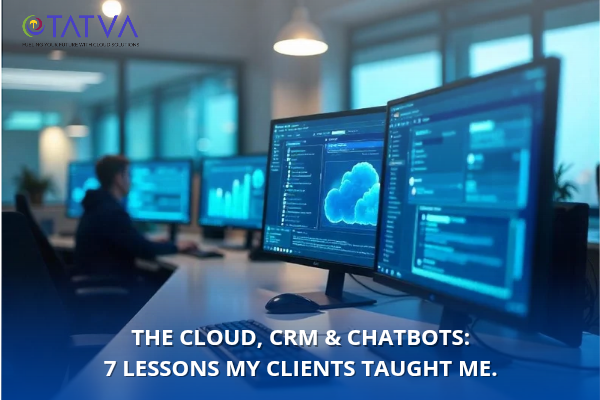Speed Thrills, But Kills Digital Transformation
Project Implementation Speed Thrills, But Kills Digital Transformation Speed Thrills, But Kills Digital Transformation Why the most successful projects start with the slowest beginnings. The Rush to Solution: A Dangerous Trend In boardrooms across industries, most infotech needs follow a predictable pattern. “We need a new CRM system,” announces the VP of Sales. “Our customer service needs an AI chatbot,” declares the Head of Ops. “We must digitise our entire workflow,” demands the CEO. The urgency is palpable, the directive is clear, and the race to implementation begins But here’s the uncomfortable truth I’ve discovered after orchestrating over 50 digital transformations across two decades: the efficacy of a solution is inversely proportional to the speed at which it is executed. This is one of the reasons why a reported 70% of digital transformation initiatives fail to deliver expected outcomes, despite millions invested annually in enterprise technology. The Real Issues: When Quick Fixes Create Bigger Problems Issue #1: The Surface Symptom Trap A mid-sized manufacturing company approached us with a “simple” request: implement a customer portal to reduce call centre volume. The surface problem seemed clear—too many routine inquiries were overwhelming their support team. The prescribed solution appeared obvious—build a self-service portal. But when we dug deeper, we discovered the real issue. Customers weren’t calling because they enjoyed talking to support agents. They were calling because the company’s delivery tracking was so unreliable that customers had no confidence in the online information. The portal would have been a expensive band-aid on a much deeper operational wound. Issue #2: The Feature Creep Phenomenon Another client, a financial services firm, wanted to “upgrade” their existing CRM system with “all the latest features.” Their initial requirements document spanned 47 pages and included everything from AI-powered lead scoring to blockchain integration for data security. The underlying assumption? More features equal better outcomes. But our discovery process revealed that their sales team was using less than 20% of their current CRM’s capabilities. The real problem wasn’t feature deficiency—it was user adoption and process alignment. Issue #3: The Technology First Fallacy A healthcare organisation came to us with a clear mandate: “We need to implement Conversational AI across all patient touchpoints.” The leadership team had attended a conference, seen impressive demos, and returned convinced that AI was their silver bullet for improving patient experience. However, our analysis revealed that their primary patient experience issues stemmed from fragmented data across multiple systems, not from communication channels. Patients were frustrated because they had to repeat their information multiple times, not because they wanted to chat with a bot. The Discovery Deep-Dive: Uncovering Real Needs Once we identified the genuine business need, the solution paradigm shifted. From seemingly complex challenges, emerged clear, actionable paths. This pattern has repeated across industries: Complex Problem Perception → Deep Discovery → Simple, Elegant Solution The key insight? Not all complex business requirements need convoluted technical solutions. In fact, the most transformative outcomes often emerge from solutions that are: Directly aligned with the core business objective Strategically minimal in scope and complexity Elegantly simple in design and implementation Immediately actionable for end users This strategic minimalism doesn’t mean cutting corners—it means concentrating on drivers of business value. Key Takeaways: A Framework for Transformation Success 1. Resist the Rush to Solution Action: Initiate a discovery phase for every digital initiative, regardless of how obvious the solution seems. Budget 20-30% of your project timeline for this phase. 2. Question the Question Action: When stakeholders present a solution request, dig three levels deeper with “why” questions: Why do you believe this solution will solve the problem? Why is this problem occurring in the first place? Why haven’t existing solutions addressed this need? 3. Map the Real User Journe Action: Conduct actual user observation sessions, not just surveys or interviews. Watch how people currently work, where they struggle, and what workarounds they’ve created. 4. Measure What’s Important Action: Define success metrics based on business outcomes, not technical features. Track user adoption, process efficiency, and business impact—not just system uptime and feature utilisation. 5. Start Simple, Scale Smart Action: Begin with the minimum viable solution that addresses the core need. Build complexity only when proven necessary through actual usage data and user feedback. The Strategic Advantage of Slow Beginning The organisations that embrace the discovery-first approach don’t just achieve better technical implementations—they develop a competitive advantage through deeper business understanding and more strategic tech investments. At a time where digital transformation has become a boardroom imperative, companies that will truly thrive are those that resist the temptation to move fast and break things. Instead, they’ll move thoughtfully and build sustainably. The next time your organisation feels the pressure to quickly implement the latest technology trend, remember: the fastest way to transformation success is often the slowest path to solution. In a world of rapid change, taking time to truly understand the problem before building the solution isn’t just good practice—it’s the ultimate competitive advantage.








